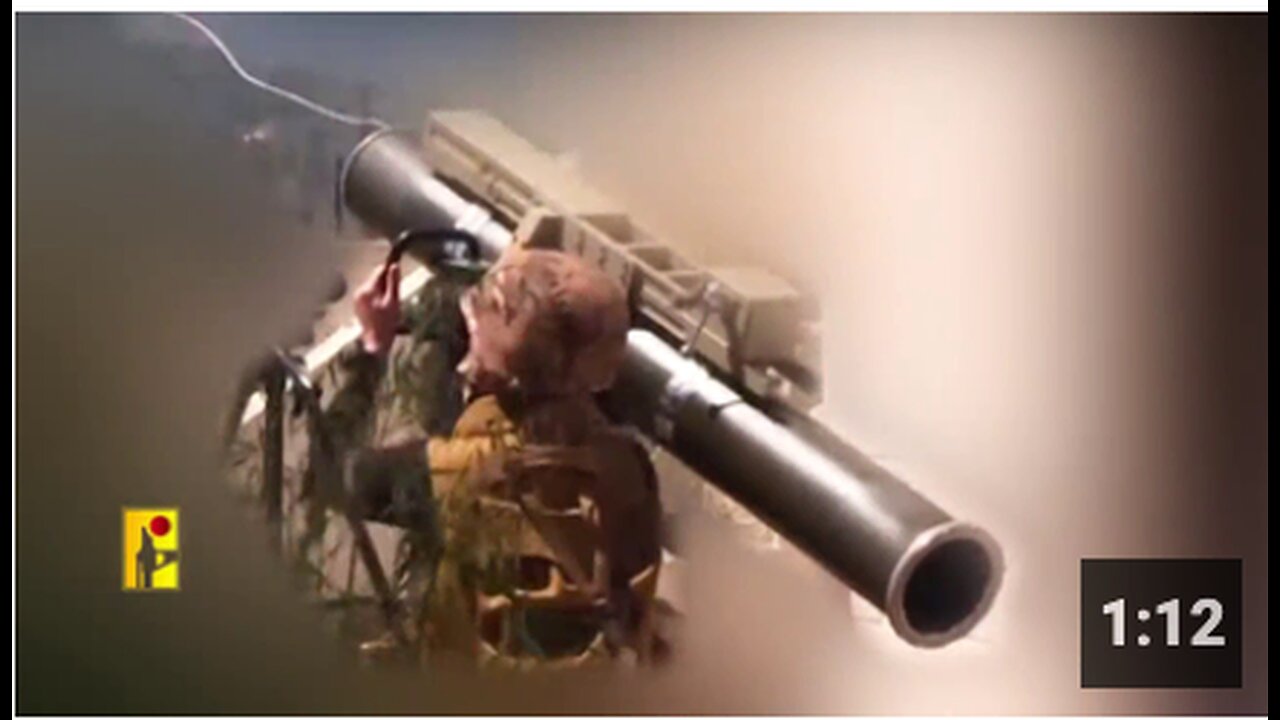Premium Only Content

Hezbollah Takes Out Israeli Radar With New Advanced Iranian-Made Missile
Hezbollah has successfully used an advanced Iranian-made anti-tank guided missile (ATGM) to take out a counter-battery radar of the Israeli Defense Forces (IDF).
The group released video footage of the attack on April 18, noting that it took place a day earlier. The radar, identified as an American-made AN/TPQ-37 Firefinder, was deployed at a key air traffic control base of the IDF on Mount Meron, some eight kilometers away from the border with Lebanon.
The AN/TPQ-37 was developed to detect and track incoming artillery and rocket fire to determine the point of origin for counter-battery fire. The S-band radar can detect an artillery shell from 30 kilometers and a rocket from up to 50 kilometers.
Hezbollah fighters used what appears to be a ground-launched version of the Iranian Almas-3 ATGM to take out the counter-battery radar.
Almas is a copy of the Israeli Spike family of ATGMs that was first unveiled by Iran some four years ago. The Almas-3 version is said to have a range of ten kilometers.
Similar to the Spike ATGM, Almas is equipped with an electro-optical or an infrared imaging seeker. The missile has a top-attack feature, meaning it can strike its target from above as a form of plunging fire. It can also hit targets behind the line of sight.
Hezbollah has been using Almas ATGMs against the IDF since the outbreak of the clashes on the Lebanese-Israeli border on the backdrop of the Israeli war on the Palestinian Gaza Strip. However, only the lighter Almas-1 version was spotted with the group’s fighters before.
The IDF lost several vehicles, including main battle tanks, and radars to Hezbollah’s Almas missile. On top of that, the group used missiles of this type in an attack on a building in the border settlement of Arab al-Aramshe that wounded more than18 Israeli troops and civilians.
The appearance of Almas missiles with Hezbollah was not only significant because of the missiles’ advanced capabilities, but also because it exposed a serious intelligence failure of Israel which has claimed for more than a decade that its so-called “war between the wars” covert military campaign, that mainly included strikes on Syria, was hindering the delivery of Iranian weapons to the group.
Source @South Front
-
 LIVE
LIVE
Due Dissidence
1 day agoLIVE: Workers Strike Back Conference ft. Chris Hedges, Jill Stein, Kshama Sawant, and More!
1,233 watching -
 8:36:37
8:36:37
Right Side Broadcasting Network
5 days agoLIVE REPLAY: CPAC 2025 Day Three with President Donald J. Trump - 2/22/25
368K89 -
 1:05:34
1:05:34
The Big Mig™
13 hours agoConfirmed Kash Patel New FBI Director, Bring On The Pain |EP483
61.2K21 -
 53:59
53:59
Tactical Advisor
9 hours agoThe Vault Room Podcast 009 | Everyone Getting $5000?!
55.6K11 -
 2:04:44
2:04:44
TheAlecLaceShow
20 hours agoLive at CPAC | Interviews with Dean Cain, Rep. Comer and more! | The Alec Lace Show
66.6K3 -
 LIVE
LIVE
Major League Fishing
3 days agoLIVE Tackle Warehouse Invitationals, Stop 1, Day 2
427 watching -
 3:12:37
3:12:37
I_Came_With_Fire_Podcast
17 hours agoNOC Spy: CIA uses SATANIC RITUAL ABUSE to make SLEEPER Cells
78.3K17 -
 28:42
28:42
CatfishedOnline
1 day ago $3.35 earnedWoman Insists Morgan Wallen Relationship Isn't a Romance Scam!
58.7K2 -
 16:25
16:25
TSPLY
1 day agoNew CNN / MSNBC Meltdown Moments Of Getting Mad At Donald Trump In February
55.2K31 -
 8:33
8:33
scoutthedoggie
10 hours agoAirsoft War Games Scotland
68.4K7